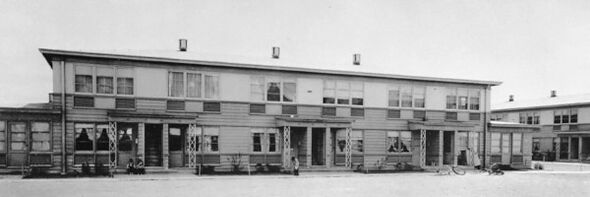Regenerative Urbanism Vanport
Jump to navigation
Jump to search
| Regenerative Urbanism Vanport | |
 Vanport Residence 1947 | |
| Team Organizations | Green Urban Design Urban.Systems |
| Point of Contact | Wilfred Pinfold |
| Participating Municipalities | Vanport OR |
| Sectors | Wellbeing Resilience |
| Initiative | |
| Status | Concept only Stage |
| Last Updated | December 17, 2025 |
Summary
Vanport, Oregon was a temporary housing project built in 1942 to address a wartime housing shortage in Portland.
The city was built on 650 acres of Columbia River floodplain.
It was the largest World War II federal housing project in the United States. At its peak, Vanport was home to over 42,000 residents, making it the second largest population center in the state.
Vanport was destroyed on May 30, 1948, when a 200-foot section of a railroad berm holding back the Columbia River collapsed during a flood. The city was underwater by nightfall, leaving 17,500 of its inhabitants homeless.
During its short life, Vanport was called everything from a "Miracle City" to a "Masterpiece of Urban Planning".